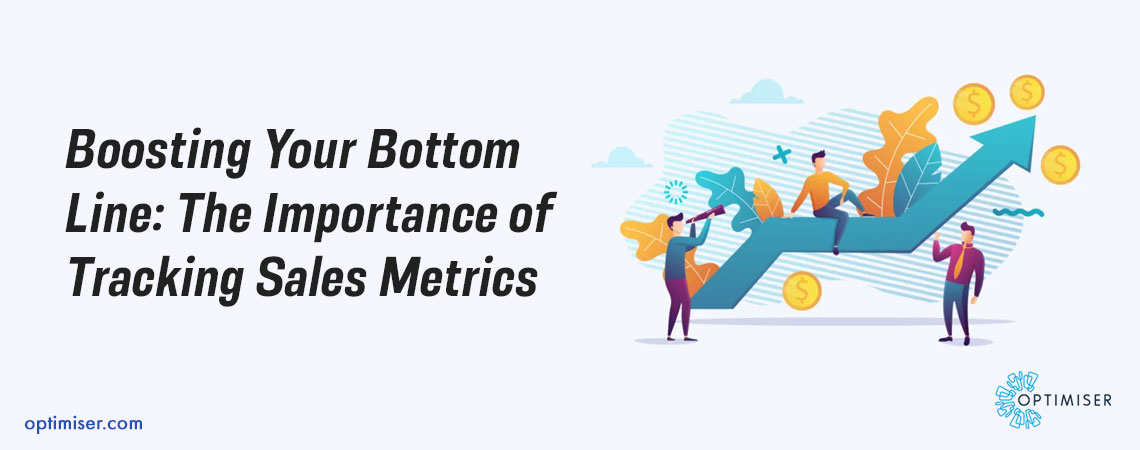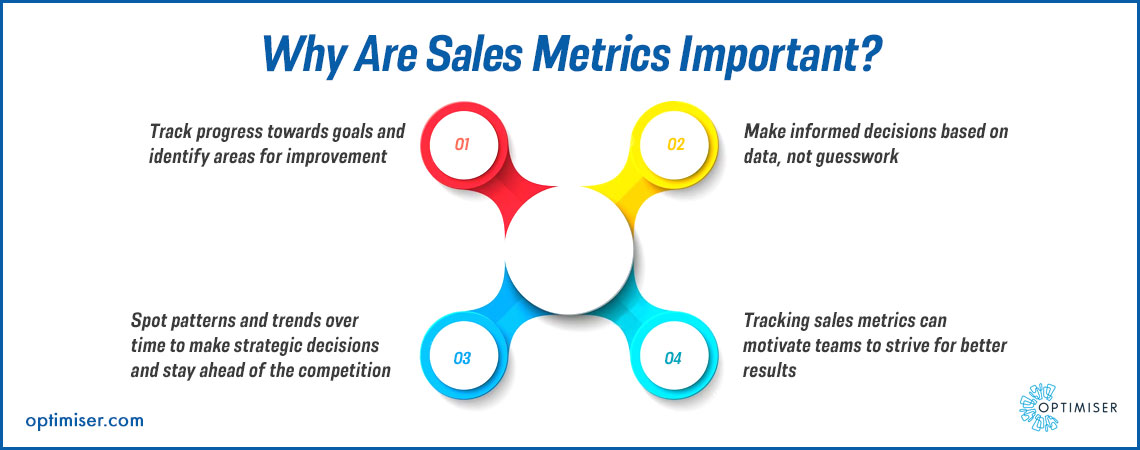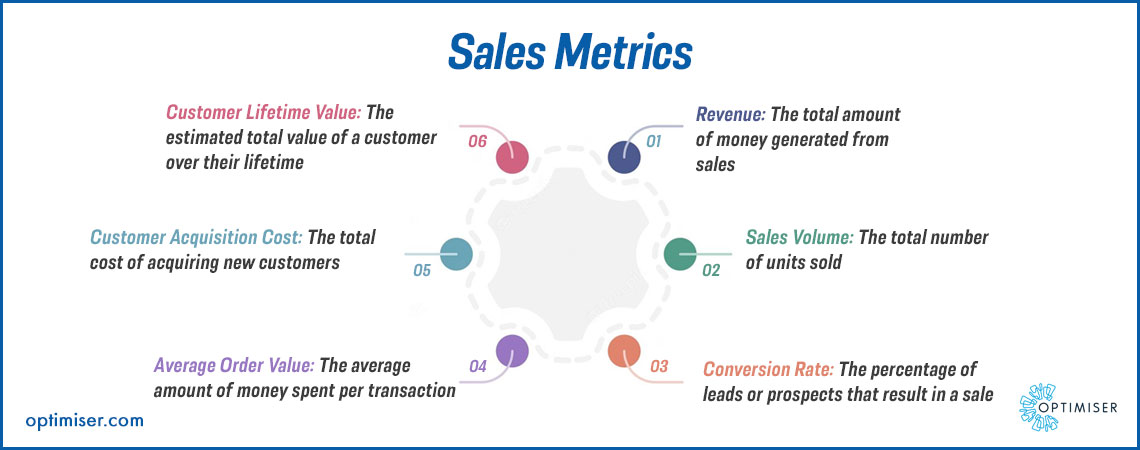
Boosting Your Bottom Line: The Importance of Tracking Sales Metrics
Sales metrics are quantitative measures used to evaluate the effectiveness of a sales team or individual salesperson. These metrics can provide valuable insights into a company's sales performance and help identify areas for improvement. Numerous sales metrics can be used, and the most appropriate ones to use will depend on the specific business goals and objectives which can be tracked with the help of a CRM for sales team. By tracking and analysing these metrics, businesses can identify areas of success and opportunities for improvement in their sales processes, which can ultimately lead to increased revenue and growth.
Why Is It Essential To Track Sales Metrics?
Tracking sales metrics is essential for any business that wants to improve its sales performance and grow its revenue. By monitoring these metrics, businesses can gain a clear understanding of their sales performance, identify areas for improvement, and make data-driven decisions.
Improve sales performance: By tracking metrics such as conversion rates and average deal size, businesses can identify areas where their sales team is struggling and make targeted improvements. For example, if the conversion rate is low, a business can focus on improving its sales team's sales techniques and training to close more deals.

Better forecasting: By tracking sales pipeline coverage and sales cycle length, businesses can forecast their future revenue more accurately. This enables them to plan for growth and make informed decisions about inventory, hiring, and other business operations. One of the main sales management system advantages is that it enables businesses to predict future trends and adapt.
Identify areas for improvement: By tracking customer acquisition cost and customer lifetime value, businesses can identify which marketing and sales strategies are most effective and allocate their resources accordingly.
Measure sales team performance: By tracking individual salesperson metrics such as sales quotas and revenue generated, businesses can identify their top-performing salespeople and reward them accordingly. Additionally, this enables businesses to identify underperforming salespeople and provide additional training or support.
Stay ahead of the competition: By tracking industry benchmarks and comparing their performance to competitors, businesses can identify areas where they are falling behind and take steps to improve.
Key Sales Metrics To Track In 2023
Revenue: The total amount of money generated from sales. Tracking revenue is essential for understanding the overall health of a business and determining if sales efforts are translating into revenue growth.
Sales growth rate: Sales growth rate measures the percentage increase or decrease in sales over a specific period. Tracking sales growth rates helps businesses understand how quickly their revenue is increasing or decreasing and whether their sales efforts are effective.
Customer acquisition cost (CAC): CAC is the cost incurred to acquire a new customer. This includes marketing and sales expenses such as advertising, lead generation, and sales team salaries. By tracking CAC, businesses can determine if their customer acquisition efforts are cost-effective and identify areas where they can reduce expenses.
Conversion rate: The conversion rate measures the percentage of leads or prospects that become paying customers. By tracking conversion rates, businesses can identify areas where their sales team is struggling to convert leads into customers and make targeted improvements.
Average deal size: Average deal size measures the average dollar amount of each sale. Tracking average deal size helps businesses understand how much revenue each customer is generating and identify opportunities to increase sales volume.
Sales cycle length: Sales cycle length measures the time it takes from initial contact with a prospect to closing the sale. Tracking sales cycle length helps businesses understand how long it takes to close deals and identify areas where the sales process can be streamlined.

Also Read: Sell Smarter In 2023 With Key Sales Statistics
Customer lifetime value (CLV): CLV measures the total amount of revenue a customer is expected to generate over their lifetime. By tracking CLV, businesses can identify their most valuable customers and make sure they are receiving the attention and support they need to remain loyal.
Sales pipeline coverage: Sales pipeline coverage measures the total value of deals in the pipeline compared to the sales quota. Tracking pipeline coverage helps businesses understand how close they are to meet their revenue goals and identify areas where additional sales efforts may be needed.
Sales team performance: Tracking individual sales team members' metrics such as sales quotas, revenue generated, and conversion rates can help businesses identify top performers and areas where additional training or support may be needed.
Return on investment (ROI): ROI measures the return on investment for specific marketing or sales campaigns. By tracking ROI, businesses can identify which campaigns are most effective and allocate their resources accordingly.
Churn rate: The churn rate measures the percentage of customers who stop doing business with a company over a specific period. By tracking churn rate, businesses can identify areas where they may be falling short in customer satisfaction and take steps to improve retention.
Optimiser CRM's Sales Suite
Optimiser CRM is a powerful tool for tracking sales metrics. The sales suite can provide businesses with a centralised database of customer information and sales data, making it easier to track and analyse sales metrics.
The best CRM for enterprise sales, Sales Suite can track customer interactions and behaviour, such as website visits, email opens, and purchases. This information can help businesses identify which customers are most likely to convert and which marketing and sales strategies are most effective.
Businesses can monitor pipelines, automate tasks, forecast sales, and analyse sales performance.
Summary
Tracking sales metrics is critical for businesses that want to grow their revenue and improve their sales performance. By leveraging data to make informed decisions, businesses can stay ahead of the competition and achieve long-term success. By using a CRM system to track sales metrics, sales teams can gain a better understanding of their customers and their buying habits, allowing them to make data-driven decisions about their sales strategies.

30 days free trial. No credit card required
 One powerful platform
One powerful platform
 Simple to use
Simple to use
 Comprehensive
Comprehensive



